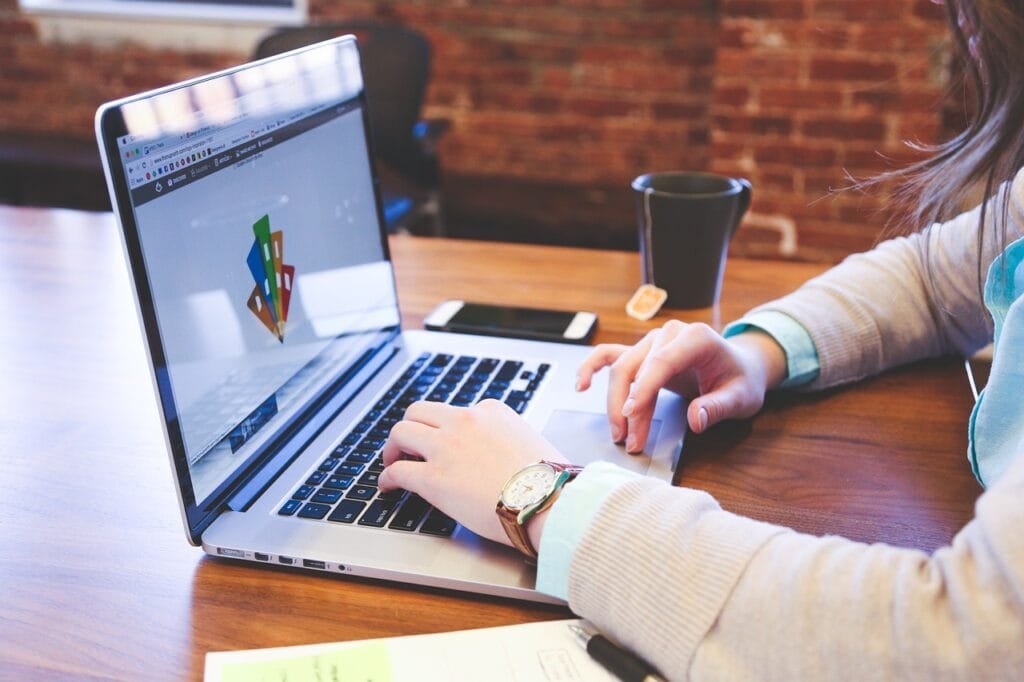This Article has been revised, edited and added to, by Poulomi Chakraborty.
- The Evolution of SEO: Why User Behavior Matters
- Unraveling User Behavior: Key Metrics to Monitor
- Delving Deeper: SEO Implications of User Behavior
- Pivoting Strategies: Adapting to the Age of User Behavior SEO
- Harnessing Advanced Techniques & Tools for User Behavior Analysis
- Advanced Analytics & Segmentation
- Heatmapping Tools
- A/B Testing & Conversion Rate Optimization (CRO) Platforms
- Predictive Analytics & AI-Driven Insights
- Elevating Analysis with AI and Machine Learning
- Integrating Behavioral Analytics for Deeper Insights
- Embracing Sentiment Analysis for Enhanced User Engagement
- Utilizing Competitive Analysis Tools for Strategic Advantage
- SEO Implications: Drawing the Line between User Behavior and Rankings
- Conclusion: The Fusion of SEO and User Behavior
In the vast ocean of digital marketing, SEO remains a lighthouse guiding businesses to the shores of visibility, relevance, and growth. While keywords, backlinks, and technical aspects of SEO have been extensively discussed, there’s a burgeoning aspect that demands attention: user behavior. In the age where the user is king, understanding their behavior, preferences, and patterns has emerged as a cornerstone for SEO success.
This article dives deep into the intricate world of user behavior analysis, its intersections with SEO, and its profound implications for the ever-evolving digital landscape. For businesses looking to stay ahead of the curve, this insight is not just beneficial – it’s imperative.
The Evolution of SEO: Why User Behavior Matters

SEO isn’t static. From the early days of keyword stuffing to the intricate nuances of semantic search and AI-driven algorithms, the SEO landscape has undergone significant transformations. The core driving force behind these changes? The end user.
Search engines like Google are dedicated to offering users the most relevant, valuable, and timely information. As such, it’s only natural that they’ve started to consider how users interact with content as a critical ranking factor.
1. Shifting Algorithms: Modern algorithms now pay heed to user engagement metrics like dwell time, bounce rate, and click-through rate (CTR). These metrics are indicative of the content’s relevancy and value to the user.
2. The Mobile Revolution: With the proliferation of smartphones, user behavior on mobile has become a central focus. Mobile-first indexing and the emphasis on mobile user experience underline this shift.
3. Voice Search & AI: The rise of voice-activated assistants like Siri, Alexa, and Google Assistant has revolutionized the way users search. This has led to a greater emphasis on natural language processing and understanding user intent.
These shifts underscore the fact that SEO is no longer just about pleasing search engines – it’s about understanding and catering to users.
The Paradigm Shift in SEO: A Deeper Dive into User Behavior
Historically, SEO strategies were heavily predicated on optimizing for search engines, often at the expense of user experience. This approach, while effective in the short term, led to a plethora of low-quality content and spammy practices that detracted from the genuine value sought by users. Recognizing this misalignment, search engines have progressively recalibrated their algorithms to prioritize user-centric metrics, heralding a new era where user behavior is not just influential but central to SEO success.
The shift toward user behavior is not merely a reaction to search engine policies but a reflection of a broader change in the digital landscape. With the advent of sophisticated AI technologies and machine learning, search engines have become adept at interpreting user intent, distinguishing between high and low-quality content, and tailoring search results to individual needs. This technological evolution demands a strategic pivot in how businesses approach SEO, urging a departure from conventional tactics in favor of a more nuanced understanding of user engagement and satisfaction.
Strategic Insights for Startup Founders: Harnessing User Behavior for SEO Mastery
For startup founders navigating the complexities of digital visibility, the emphasis on user behavior presents both a challenge and an opportunity. The imperative lies in not just attracting traffic, but in fostering meaningful interactions that resonate with users’ needs and preferences. Here are several strategic considerations to guide this journey:
Crafting a User-Centric SEO Strategy
- Understanding User Intent: Begin by delving deep into the intent behind search queries related to your business. This involves analyzing the types of content that rank well for those queries and identifying patterns in user engagement. The goal is to uncover the underlying needs and preferences of your target audience, which will inform the creation of content that genuinely addresses their queries.
- Optimizing for Engagement: Engagement metrics such as time on site, page views per session, and interaction rates offer invaluable insights into how users perceive and interact with your content. Startups should prioritize creating compelling, valuable content that encourages users to engage more deeply with their site. This involves employing storytelling techniques, incorporating multimedia elements, and ensuring content relevance to keep users interested and invested in your offerings.
- Enhancing User Experience (UX): A seamless, intuitive user experience is paramount in retaining user interest and reducing bounce rates. For startups, this means investing in responsive design, fast loading times, and easy navigation. Moreover, personalizing the user experience can significantly boost engagement, making users feel valued and understood.
Leveraging Technology and Analytics
- Utilizing Analytics for Insight: Advanced analytics tools go beyond surface-level metrics to offer deep insights into user behavior patterns. Startups should leverage these tools to monitor user interactions, identify content preferences, and detect potential pain points within their digital platforms. These insights allow for continuous optimization of both content and user experience, aligning more closely with user needs over time.
- Adopting AI and Machine Learning: Artificial intelligence and machine learning technologies offer unprecedented opportunities to predict user behavior, automate content personalization, and optimize SEO strategies in real-time. By adopting these technologies, startups can stay ahead of the curve, ensuring their content remains relevant and engaging in a rapidly evolving digital environment.
Unraveling User Behavior: Key Metrics to Monitor

Before we dive into the implications, it’s crucial to understand the key metrics that offer a window into user behavior.
1. Click-Through Rate (CTR): This metric provides insights into how enticing and relevant your SERP listing is to users. A higher CTR often indicates compelling meta titles and descriptions.
2. Dwell Time: The amount of time users spend on your page after clicking on your SERP listing. Longer dwell times can suggest that the content is engaging and relevant to the user’s query.
3. Bounce Rate: This represents the percentage of visitors who navigate away from your site after viewing only one page. A high bounce rate can be a red flag, suggesting that the content didn’t match the user’s expectations or the user experience was lacking.
4. Pages per Session: This indicates the average number of pages a user views during a single session. More pages can mean more engagement.
5. Return Visitors: A measure of how many users are returning to your site after their initial visit. A high number of return visitors can indicate valuable, compelling content or a positive overall user experience.
Beyond Basic Metrics: A Deeper Understanding of User Interactions
While traditional metrics like click-through rate, bounce rate, and dwell time offer a foundational understanding of user behavior, the journey to truly comprehending how users interact with your digital presence requires a more nuanced approach. This involves delving into the analytics that reveal the quality of user engagement and the alignment of content with user needs.
Evaluating User Engagement Quality
The quality of user engagement speaks volumes about the relevance and value of your content. Metrics such as session duration and interaction rate provide a glimpse into how users interact with your site, but to truly gauge engagement quality, startups must look at:
- Content Interaction Depth: Understanding how deeply users engage with your content can be revealing. Analyzing the scroll depth across your pages can show how much of your content is actually being consumed. Engaging content is not just about keeping users on a page longer; it’s about drawing them in, compelling them to explore your content fully.
- Conversion Path Efficiency: For startups, the ultimate aim of driving traffic to their website often revolves around conversions, be it signing up for a newsletter, downloading a white paper, or making a purchase. Tracking the paths users take to conversion, identifying common drop-off points, and understanding the user journeys that lead to conversions can offer invaluable insights for optimizing both content and user flow.
Insightful Interactions and User Feedback
- Active vs. Passive Engagement: Distinguishing between active and passive engagement helps in tailoring content strategies effectively. Active engagement involves actions like filling out forms, using interactive tools, or participating in polls, while passive engagement might be reflected in metrics like time on site or page views. By identifying the types of content that stimulate active engagement, startups can prioritize content creation efforts more strategically.
- User Feedback Incorporation: Beyond numerical metrics, direct user feedback through surveys, feedback forms, and social media interactions offers qualitative insights into user behavior. This feedback can be instrumental in identifying content gaps, refining user experience, and enhancing overall site usability.
Leveraging Advanced Analytics for Strategic Decisions
In the age of data-driven decision-making, leveraging advanced analytics is critical for startups aiming to understand and optimize user behavior. Tools that provide heatmaps, session recordings, and event tracking offer a granular view of how users interact with your website.
Harnessing the Power of Heatmaps and Session Recordings
Heatmaps and session recordings offer a visual representation of user behavior, highlighting areas of your site that receive the most attention and interaction. This can guide startups in optimizing page layouts, improving content placement, and making informed decisions about website design to enhance user experience and engagement.
Event Tracking for Actionable Insights
Event tracking goes a step further by providing data on specific interactions within your website. Whether it’s clicks on a call-to-action button, interactions with a chatbot, or engagement with a video, understanding these micro-interactions can help startups refine their content and functionality to better meet user needs.
Delving Deeper: SEO Implications of User Behavior

As search engines become increasingly sophisticated, their focus on delivering the best user experience sharpens. This relentless pursuit makes it clear: user behavior is not merely an indicator of content quality but a pivotal driver of SEO success. Let’s explore the tangible implications of user behavior for SEO.
Content Relevancy & Quality
- Tailored to Intent: Search engines can gauge the relevancy of content by observing user interaction. Pages that satisfy user intent are rewarded with better rankings. Hence, it’s essential to tailor content to match the various stages of the user’s search journey, from informational to transactional.
- Depth & Breadth: A page that keeps users engaged is likely offering in-depth, comprehensive information. Thin content often leads to quick exits, signaling to search engines that the content might be lacking.
Site Architecture & Navigation
- Fluid User Journeys: User behavior can shed light on the fluidity of navigation within a site. If users frequently backtrack or exit soon after landing on a page, it might hint at navigational issues or confusing site architecture.
- Internal Linking: A robust internal linking strategy can enhance user behavior metrics. Guiding users to related, relevant content can increase pages per session and reduce bounce rates.
Mobile Responsiveness
- Mobile UX: Given the dominance of mobile search, user behavior on mobile devices directly impacts SEO. Poor mobile experiences, leading to high bounce rates or low dwell times, can hurt rankings.
- Accelerated Mobile Pages (AMP): Implementing AMP can drastically improve mobile page load times, positively influencing user behavior and, by extension, SEO.
Technical SEO & Page Speed
- Swift Loading: Slow-loading pages can lead to immediate user drop-off, affecting metrics like bounce rate. Investing in page speed optimization is no longer a luxury but a necessity.
- Security & Trust: User hesitancy to engage with non-secure sites can negatively impact behavioral metrics. Ensuring HTTPS implementation can boost user trust and engagement.
Rich Snippets & Structured Data
- Enhanced SERP Presence: Rich snippets can drastically improve CTR. By offering users a preview (like ratings, images, or additional information), you cater to their need for quick, relevant data.
The Ripple Effect of User Engagement on SEO
The influence of user behavior on SEO extends beyond surface-level metrics, permeating the very fabric of search engine algorithms. As search engines strive to deliver increasingly personalized and relevant results, the signals generated by user interactions with content become pivotal in shaping SEO strategies.
Amplifying Content Visibility Through Enhanced User Engagement
The relationship between user engagement and content visibility is reciprocal. High-quality, engaging content attracts more users and encourages deeper interactions, which in turn signals to search engines the value and relevance of the content. This dynamic underscores the importance of crafting content that resonates with the target audience, not just in terms of topical relevance but also in delivering a satisfying user experience.
The Strategic Role of Behavioral Signals in Content Ranking
Search engines utilize a complex array of behavioral signals to determine content ranking. These signals include but are not limited to, dwell time, click-through rates, and interaction patterns. Understanding the weight of these signals can guide startups in fine-tuning their content and SEO strategies to align with what search engines deem high-quality. This requires a meticulous approach to content creation, where the focus extends beyond keywords to include the overall value delivered to the user.
Crafting SEO Strategies with a User-Centric Lens
Adopting a user-centric approach to SEO involves a deep dive into the analytics of user behavior, leveraging these insights to inform every aspect of content creation, website design, and user experience optimization.
Prioritizing User Experience in SEO Optimization
Enhancing the user experience is not just about aesthetics or navigation; it’s about creating a seamless, engaging, and valuable journey for the user from the moment they land on your site. This includes optimizing page load times, ensuring mobile responsiveness, and providing clear, actionable content that addresses the user’s intent. By prioritizing the user experience, startups can improve the quality signals sent to search engines, thereby boosting their SEO performance.
Integrating Behavioral Insights into Content Strategy
Leveraging behavioral insights can transform how content is conceptualized, created, and presented. By analyzing patterns in user engagement, startups can identify the types of content that resonate most with their audience, the topics that generate the most interest, and the formats that encourage the deepest engagement. This data-driven approach to content strategy not only enhances SEO outcomes but also builds a stronger, more meaningful connection with the audience.
Embracing Continuous Learning and Adaptation
The digital marketing landscape is characterized by rapid changes and evolving user expectations. Staying ahead in the SEO game requires an ongoing commitment to learning and adaptation. This involves regularly revisiting user behavior metrics, staying abreast of changes in search engine algorithms, and being willing to pivot strategies based on new insights.
Leveraging A/B Testing for Data-Driven Optimization
A/B testing emerges as a powerful tool in the arsenal of startups looking to optimize their digital presence based on user behavior. By systematically testing different versions of content, layouts, and calls to action, startups can gain actionable insights into what works best for their audience, allowing for data-driven optimization that directly impacts SEO performance.
Pivoting Strategies: Adapting to the Age of User Behavior SEO

The understanding of user behavior’s influence on SEO should be a call to action. Brands need to adapt, evolve, and, most importantly, place the user at the heart of their SEO strategies.
- User Feedback: Regularly collecting and analyzing user feedback can provide invaluable insights into what’s working and what’s not. Tools like heatmaps, user surveys, and feedback forms can be instrumental.
- Regular Audits: Periodic site and content audits, focusing on user behavior metrics, can help pinpoint areas of improvement.
- Training & Up-skilling: As user behavior becomes a central tenet of SEO, investing in team training to understand and leverage these insights is crucial.
- Content Iteration: Instead of a “set-it-and-forget-it” approach, content should be regularly updated, refined, and optimized based on evolving user behavior patterns.
Embracing a Holistic View of SEO and User Experience
The intersection of SEO and user experience (UX) has never been more pronounced. Understanding and optimizing for user behavior demands a holistic approach, where every element of your digital presence is aligned with the needs and preferences of your target audience.
Integrating SEO with UX Design Principles
The fusion of SEO and UX design principles offers a strategic advantage, enabling startups to create digital experiences that are not only visible to search engines but also deeply engaging for users. This integration involves ensuring that website architecture, navigation, and content hierarchy are optimized for both search engines and user convenience. By doing so, startups can facilitate smoother user journeys, encouraging longer sessions, lower bounce rates, and, ultimately, higher conversion rates.
Leveraging Data for Personalized User Experiences
In today’s digital ecosystem, personalization is key to engaging and retaining users. Startups can leverage user data to tailor content, offers, and interactions to individual preferences and behaviors. This level of personalization enhances the user experience, increasing the likelihood of conversions and repeat visits, which in turn signals to search engines the value and relevance of the website.
Innovating with Content: Beyond Keywords to Value Creation
The role of content in SEO transcends keywords and search rankings; it’s about delivering value that resonates with your audience. In the age of user behavior SEO, content innovation becomes a strategic imperative.
Crafting Story-Driven Content
Storytelling is a powerful tool in engaging users and fostering emotional connections. Startups should aim to craft content that tells a compelling story about their brand, products, or services, engaging users on a deeper level. This narrative approach not only enhances user engagement but also encourages sharing, further amplifying visibility and SEO performance.
Exploring New Content Formats and Channels
Diversifying content formats and exploring new channels can significantly enhance engagement and reach. Interactive content such as quizzes, infographics, and videos can increase user interaction, while podcasting and live streaming offer fresh avenues for reaching and engaging with audiences. Startups should continually experiment with different content types and distribution channels to find the mix that best resonates with their target audience.
Fostering Community and Encouraging User-Generated Content
Building a community around your brand can amplify engagement and create valuable user-generated content (UGC), which enhances SEO through fresh, authentic content and increased user interaction.
Leveraging Social Media and Forums
Social media platforms and forums offer fertile ground for building communities. Startups can engage with users, encourage discussions, and solicit feedback, fostering a sense of belonging among users. Active communities can generate a wealth of UGC, from reviews and testimonials to user-created content, enriching the brand’s digital presence and SEO.
Implementing Programs to Incentivize UGC
Encouraging users to contribute content can be strategically beneficial. Implementing reward programs, contests, and user spotlights can motivate users to create and share content related to your brand. This not only enriches your content landscape but also leverages the social proof and authenticity that come with UGC, boosting SEO and credibility.
Committing to Continuous Learning and Evolution
The digital landscape and user behavior are in constant flux, making continuous learning and evolution non-negotiable for startups. Staying informed about the latest trends, algorithm updates, and user preferences is crucial for adapting strategies in real-time.
Investing in SEO and UX Training
Ensuring that your team is up-to-date with the latest in SEO and UX design can drive more informed and effective strategies. Investing in training and professional development opportunities can enhance your team’s ability to innovate and adapt, keeping your startup at the forefront of digital trends.
Engaging with Analytics for Iterative Improvement
Regularly reviewing analytics and user feedback provides actionable insights for iterative improvement. Startups should establish a routine of analyzing performance data, identifying areas for optimization, and testing changes to continuously refine their SEO and UX strategies.
Harnessing Advanced Techniques & Tools for User Behavior Analysis
In the era of data-driven marketing, the ability to analyze, interpret, and act upon user behavior data is paramount. With myriad tools and techniques at our disposal, the challenge isn’t in collecting data, but in deriving actionable insights from it.

Related: Check out our free SEO suite

Advanced Analytics & Segmentation
- Google Analytics: Beyond basic metrics, Google Analytics offers advanced segmentation options. You can break down user behavior by device type, source/medium, demographic, and more. This granularity allows for targeted optimizations.
- Behavior Flow Report: This invaluable report visualizes the path users take through your site, highlighting drop-offs, bottlenecks, and popular navigation paths.
Heatmapping Tools
- Hotjar & Crazy Egg: These tools visually represent where users are clicking, moving, and scrolling on your pages. By understanding which areas attract attention and which go unnoticed, content and design optimizations can be more informed.
3. Session Recording Tools
- FullStory & Mouseflow: Watch real-time replays of user sessions. Understand how they navigate, what they focus on, and where they face issues. It’s like a focus group for your website, providing a goldmine of optimization insights.
A/B Testing & Conversion Rate Optimization (CRO) Platforms
- Optimizely & VWO: Don’t rely on gut feelings. Test variations of your content, design, or user flows to see which resonate best with your audience. Iterative testing, based on user behavior, can drive continual improvements.
Predictive Analytics & AI-Driven Insights
- Pendo & Mixpanel: These advanced platforms leverage AI to predict future user behaviors based on historical data. For instance, predicting which users are most likely to convert or identifying potential churn before it happens.
Elevating Analysis with AI and Machine Learning
Artificial Intelligence (AI) and Machine Learning (ML) are at the forefront of transforming user behavior analysis. By harnessing these technologies, startups can move beyond basic analytics to predictive and prescriptive insights, offering a more nuanced understanding of user needs and behaviors.
Predictive Analytics for Proactive Strategy Planning
AI and ML can analyze vast amounts of data to predict future user behaviors, enabling startups to anticipate needs and tailor their content and UX strategies accordingly. This proactive approach can lead to higher engagement rates, improved customer satisfaction, and better SEO outcomes as content becomes more aligned with user intent.
Personalization at Scale with AI
Personalizing the user experience is critical in today’s digital marketplace. AI technologies allow startups to customize content, recommendations, and interactions for individual users at scale. This level of personalization enhances the user experience, encourages longer site engagements, and increases the likelihood of conversion, all of which positively impact SEO.
Integrating Behavioral Analytics for Deeper Insights
Behavioral analytics tools go beyond traditional web analytics by offering deeper insights into how users interact with your website and content. These tools can track every click, scroll, and mouse movement, providing a comprehensive view of user behavior.
Heatmaps for Visual User Journey Mapping
Heatmaps are invaluable for visualizing the areas of your website that attract the most attention and interaction. By understanding which elements capture interest and which are overlooked, startups can optimize page layouts, content placement, and CTAs to better meet user expectations and improve SEO performance.
Advanced Session Replay for Real-Time Insights
Session replay tools offer a window into the actual experiences of users on your site. Watching real-time interactions helps identify usability issues, points of confusion, or barriers to conversion. This insight allows for targeted improvements to site design and content, directly addressing the factors that influence SEO rankings and user satisfaction.
Embracing Sentiment Analysis for Enhanced User Engagement
Sentiment analysis, powered by natural language processing, can analyze user feedback, comments, and social media mentions to gauge public sentiment towards your brand, products, or content. This analysis can uncover hidden insights into user needs and preferences, informing content strategies that resonate with your audience and foster positive SEO signals.
Leveraging User Feedback for Continuous Improvement
Actively seeking and analyzing user feedback through surveys, reviews, and social interactions provides direct insights into how users perceive your brand and content. This feedback loop is essential for continuous improvement, allowing startups to refine their offerings and user experience in alignment with user expectations and SEO best practices.
Utilizing Competitive Analysis Tools for Strategic Advantage
Understanding the competitive landscape is crucial for carving out a niche in the digital marketplace. Competitive analysis tools can provide insights into the SEO strategies, content performance, and user engagement metrics of your competitors. This intelligence can inform strategic decisions, helping startups to identify opportunities for differentiation and optimization.
Benchmarking Against Industry Leaders
By benchmarking user behavior metrics and SEO performance against industry leaders, startups can set realistic goals and strategies for improvement. This comparison can also highlight gaps in the market or areas where your startup can offer unique value, driving innovation and competitive advantage.
SEO Implications: Drawing the Line between User Behavior and Rankings

The intersection of user behavior and SEO is complex. While it’s evident that search engines use some behavioral signals to gauge content relevance and quality, the exact weightage of these metrics in the ranking algorithm remains a subject of debate.
However, one thing is clear: optimizing for user behavior invariably aligns with optimizing for search engines. Both paths lead to the same destination – delivering the best possible experience to users.
Engagement as a Ranking Signal?
While Google has been ambiguous about specifics, there’s enough empirical evidence to suggest that metrics like dwell time, bounce rate, and CTR play a role, however indirect, in rankings.
Feedback Loop
User behavior can influence rankings, which in turn influence user behavior. For instance, improving CTR might lead to better rankings, which could further enhance visibility and CTR. It’s a virtuous cycle that, once initiated, can yield compounding benefits.
The Role of Machine Learning
With Google’s RankBrain, machine learning has entered the SEO arena. RankBrain interprets user searches, tries to understand intent, and delivers results accordingly. Observing user satisfaction with these results (through behavioral signals) can refine and train the system further.
Unpacking the Dynamics of User Behavior and SEO
The interrelation between user behavior metrics and search engine rankings is a dynamic and ever-evolving narrative in the SEO realm. While search engines like Google maintain a level of opacity regarding the exact algorithms used to rank content, it is widely acknowledged that user engagement and satisfaction metrics play a significant role in these calculations.
The Weight of Engagement Metrics in SEO
Engagement metrics such as dwell time, pages per session, and bounce rate offer a window into how users interact with a website. A high dwell time and multiple pages per session can signal to search engines that a website is providing valuable content, leading to potential uplifts in rankings. Conversely, a high bounce rate might indicate that the site’s content is not meeting user expectations, which could negatively impact SEO performance. For startups, focusing on enhancing the user experience and content relevancy is paramount to improving these metrics.
Navigating Through User Intent and Content Alignment
Understanding and aligning with user intent is a critical aspect of modern SEO strategies. Search engines are increasingly adept at discerning the intent behind search queries and evaluating whether the content on a webpage satisfactorily addresses this intent. Startups must invest in keyword research and content creation strategies that go beyond surface-level optimization, focusing on deep content alignment with user intent to improve SEO outcomes.
Leveraging User Behavior Insights for SEO Optimization
The insights gleaned from analyzing user behavior can be instrumental in refining SEO strategies. By closely monitoring how users interact with their content and website, startups can identify opportunities for optimization that directly impact search rankings.
Enhancing Site Architecture for Improved User Engagement
A well-structured site architecture not only aids in navigation but also influences user engagement and SEO. Startups should aim to design a website that facilitates easy access to information, with a logical hierarchy and intuitive navigation paths. Implementing clear, descriptive URLs and streamlined menus can improve user experience and engagement, signaling to search engines the site’s value, thereby potentially boosting rankings.
Content Optimization Based on Behavioral Analysis
Content is the linchpin of user engagement and, by extension, SEO. Startups should leverage user behavior analysis to understand what content performs well and why. This involves not just looking at what topics are popular but also analyzing content formats, lengths, and styles that resonate with the audience. Iteratively refining content based on these insights can lead to improved user engagement and SEO performance.
The Continuous Feedback Loop Between SEO and User Behavior
SEO and user behavior are part of a continuous feedback loop, where improvements in one area can positively affect the other. For instance, by enhancing the user experience and content relevance, startups can see improvements in user behavior metrics, which in turn can lead to better SEO rankings. This improved visibility can attract more users, further feeding into the cycle of engagement and optimization.
Embracing a Culture of Testing and Adaptation
In the dynamic landscape of SEO, embracing a culture of continuous testing and adaptation is essential. Startups should adopt an iterative approach to SEO, regularly testing different strategies, from keyword optimization to layout changes, and analyzing how these adjustments affect user behavior and rankings. This proactive stance allows for quick pivots and refinements, ensuring that the startup’s digital marketing strategy remains agile and effective.
Conclusion: The Fusion of SEO and User Behavior
The symbiotic relationship between SEO and user behavior has never been as pronounced as it is today. With search engines striving to offer the most relevant and valuable results to users, it’s evident that understanding, analyzing, and optimizing for user behavior is not just an added advantage—it’s a necessity.
The core of this relationship lies in delivering value. Websites that prioritize user needs, offer stellar content, and ensure seamless navigation naturally resonate with their audience. And in doing so, they send positive signals to search engines.
However, it’s also essential to understand that while data offers insights, it doesn’t paint the complete picture. The human touch, intuition, and empathy toward users’ needs remain irreplaceable. Tools and techniques can guide our strategies, but genuine understanding and commitment to the user experience set the stage for true SEO success.
Read Next:



















